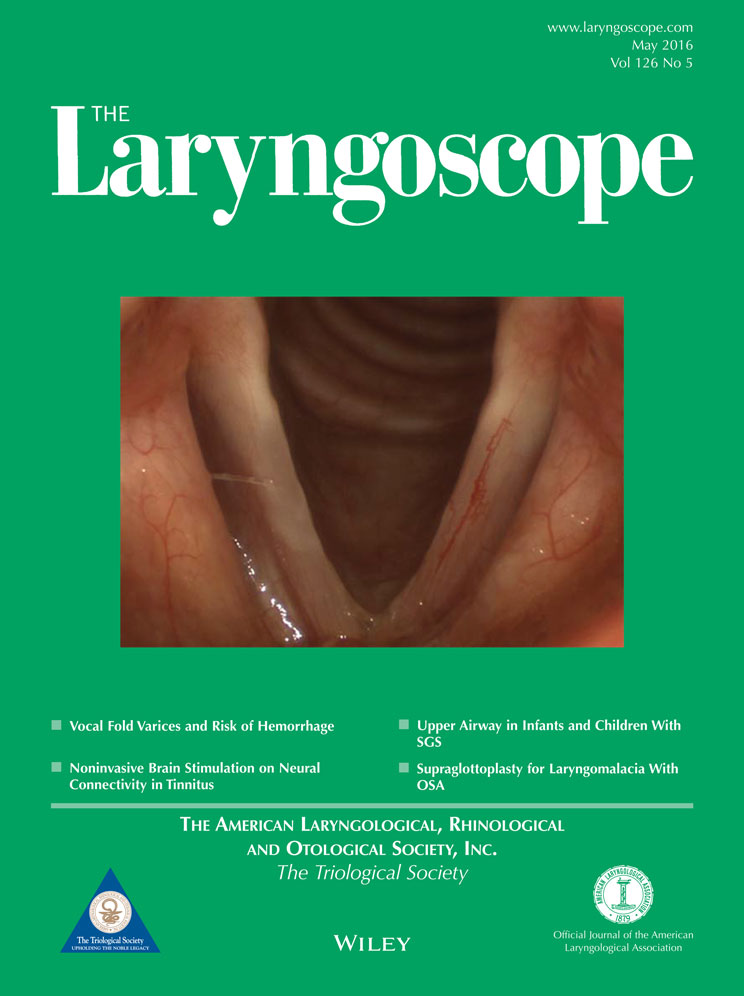Endoscopic endonasal greater palatine artery cauterization at the incisive foramen for control of anterior epistaxis
Presented at the American Academy of Otolaryngology Meeting, Orlando, Florida, U.S.A., September 23, 2014.
The authors have no funding, financial relationships, or conflicts of interest to disclose.
Abstract
Objectives/Hypothesis
To describe the anatomy of the incisive foramen and the transnasal endoscopic approach to the greater palatine artery at this foramen, and to evaluate the importance of the greater palatine artery as a cause of recurrent anterior epistaxis.
Study Design
Anatomical dissection, radiographic study, and prospective case series.
Setting
Academic Medical Center.
Methods
Sixty-nine computed tomography scans were reviewed, and measurements were made of the incisive foramina's distance to the anterior nasal spine and subnasale. Twenty-two cadavers had sagittal split craniotomies performed prior to the measurements. The distance from the anterior nasal spine to the incisive foramen was documented. We also present an illustrative case series of patients who underwent endoscopic cautery of the greater palatine artery at the incisive foramen.
Results
Radiographic review of the incisive foramen revealed a mean anterior nasal spine to incisive foramen distance on the right and left of 7.9 and 8.1 mm, respectively. The mean distance from the subnasale to incisive foramen on the right and left were 24.7 and 24.9 mm, respectively.
Conclusions
Endoscopic cauterization of the greater palatine artery at the incisive foramen is a safe and effective method to control recurrent anterior epistaxis. The incisive foramen can be predictively found within 1 cm of the anterior nasal spine. Our case series corroborates the above.
Level of Evidence
4. Laryngoscope, 126:1033–1038, 2016




